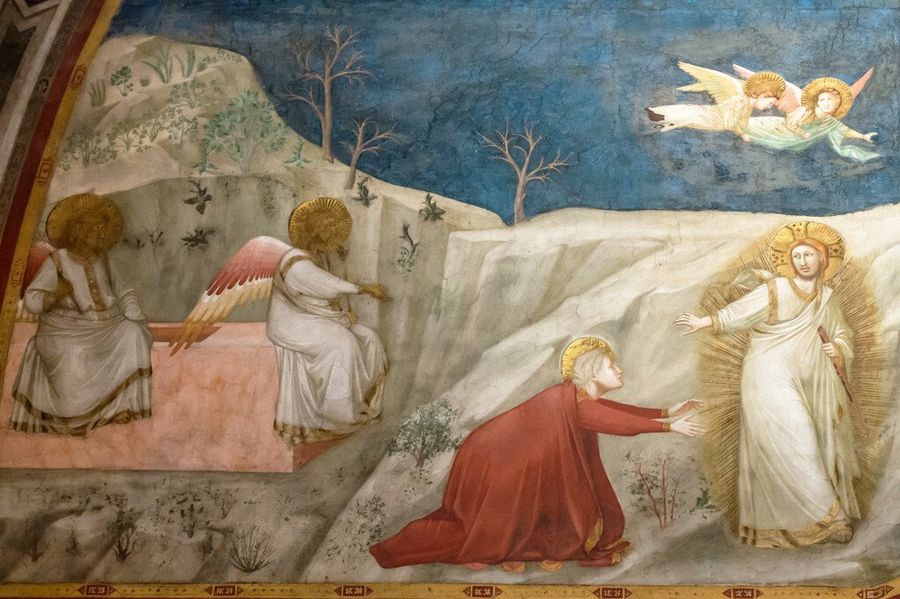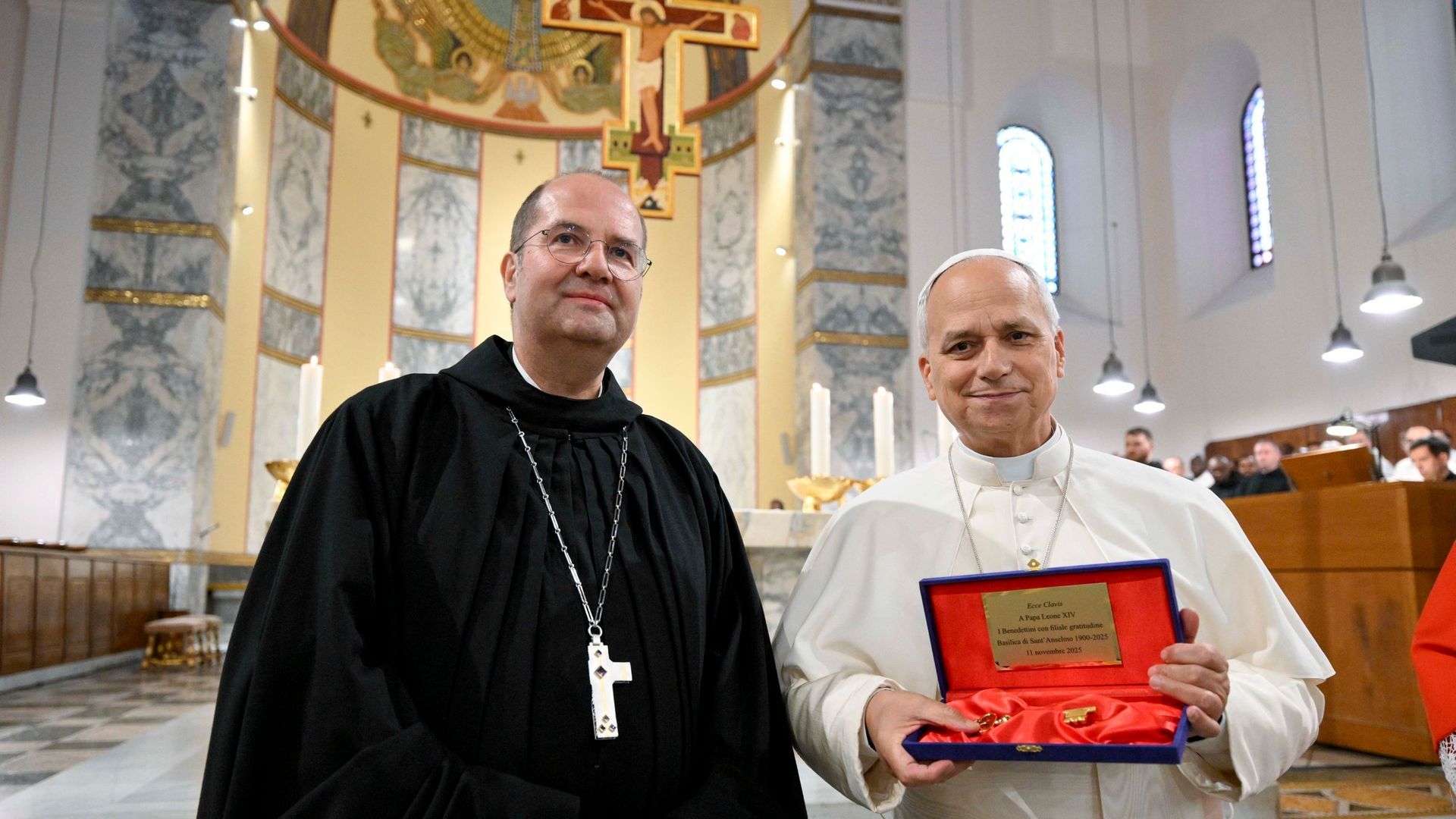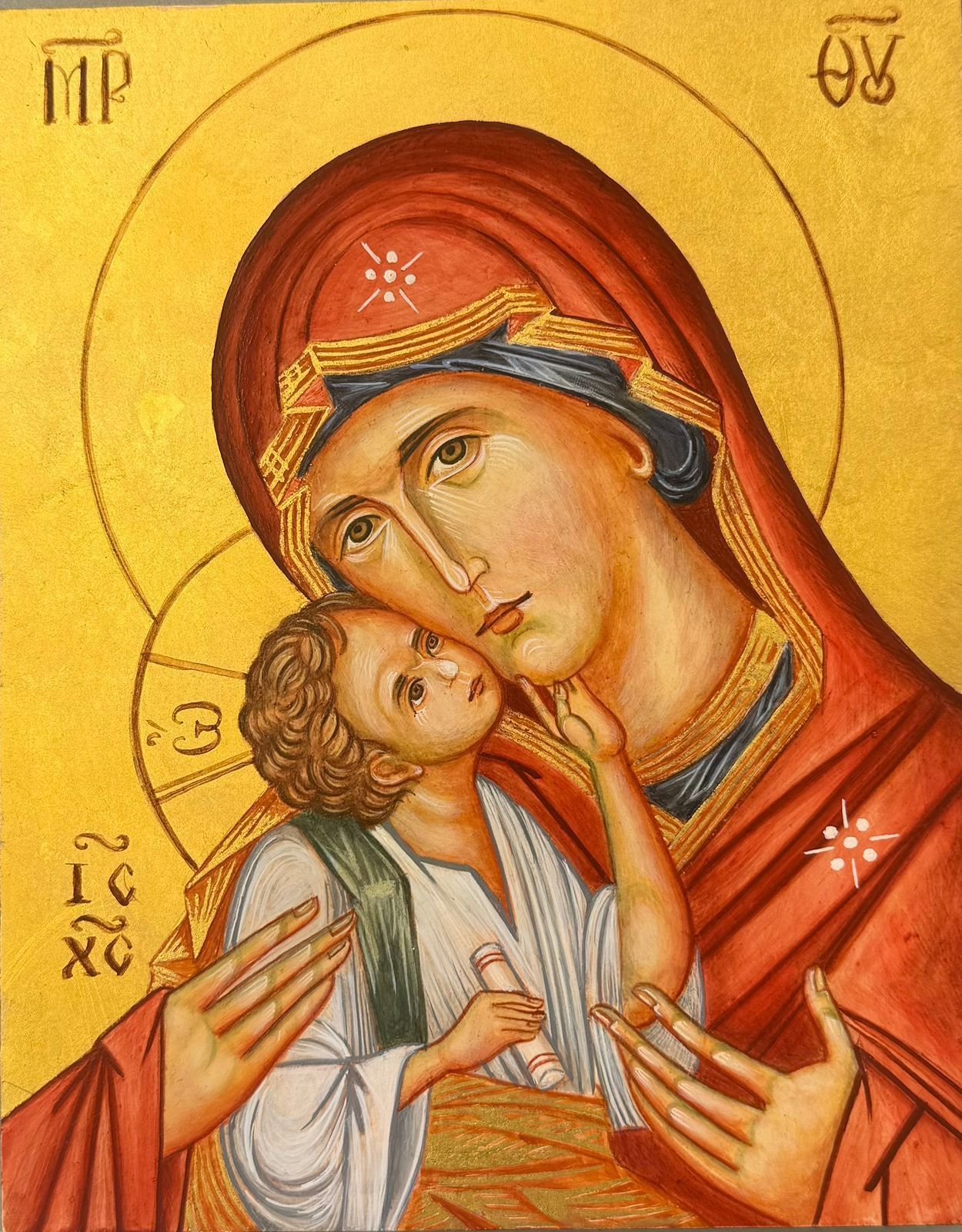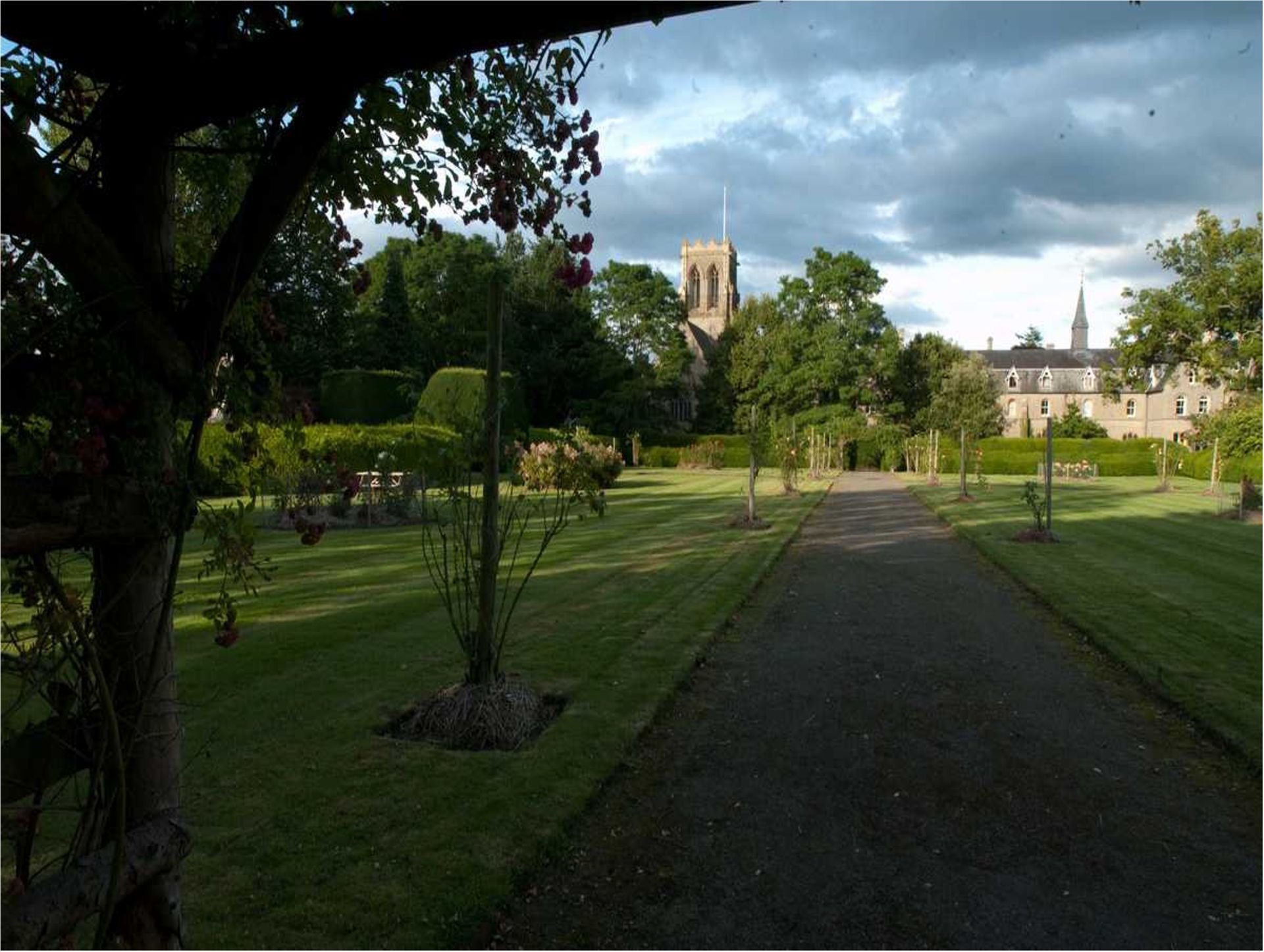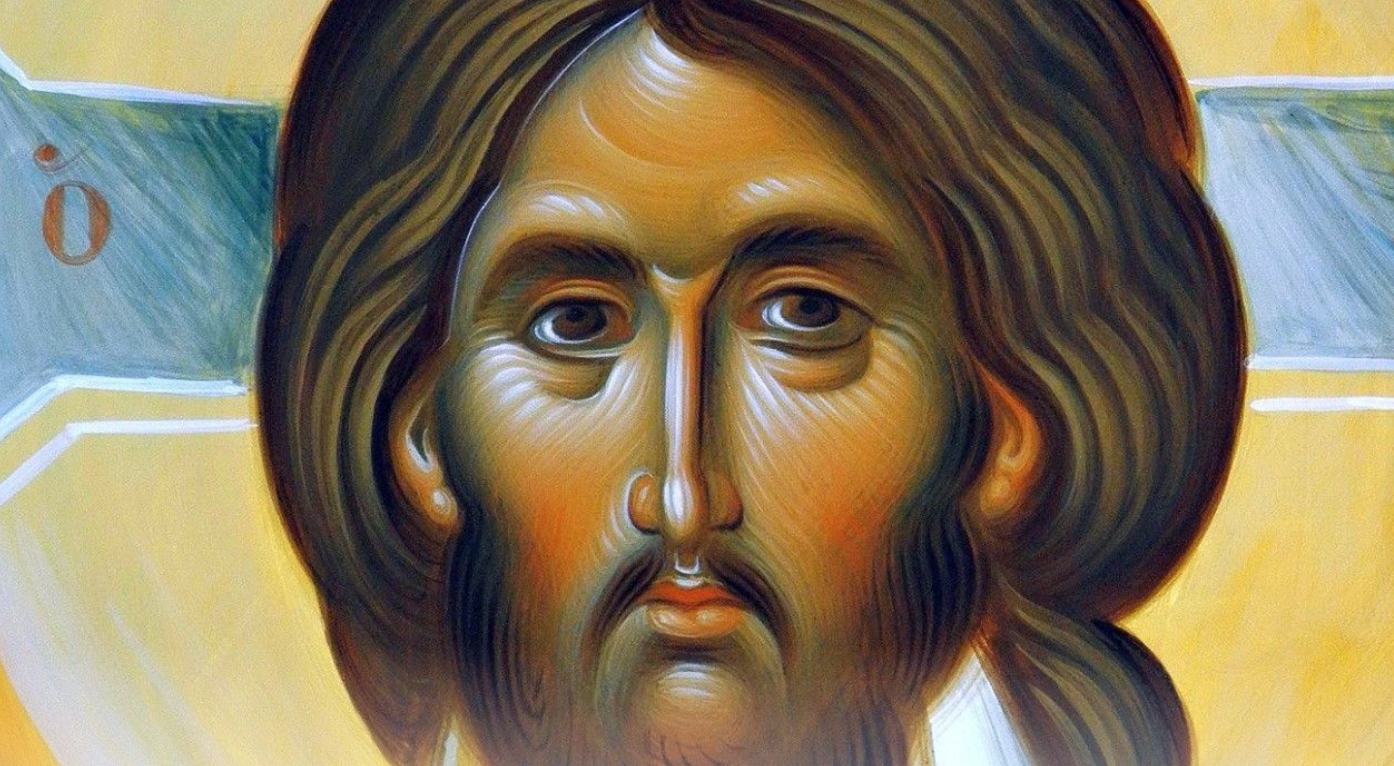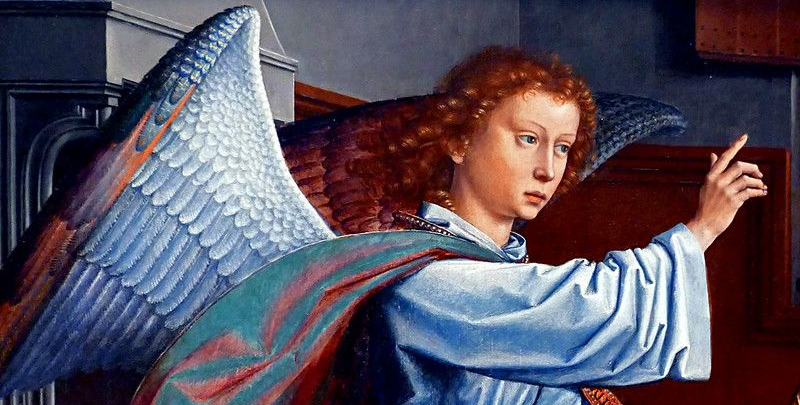Message of Abbot Paul - Easter Sunday
Message from Fr Paul for Easter Sunday, 4th April 2021
“They have taken the Lord out of the tomb and we don’t know where they have put him.” These are the words addressed by Mary of Magdala to “Simon Peter and the other disciple, the one Jesus loved,” in John’s account of the discovery of the empty tomb that first Easter morning, (Jn 20: 1-9). The details of the Resurrection we find here are fascinating. To begin with, Mary Magdalene is alone and not with the other women, as the other three gospels relate, and when she goes to the tomb on the first day of the week, it’s still dark, yet she sees that the stone has been moved away. She runs off and finds Peter and the Beloved Disciple, who hadn’t been anywhere near the tomb since Jesus was buried. Why does she say, ”They have taken the Lord out of the tomb,” and, if she was alone, why does she say, “we don’t know where they have put him”? Details, but important ones, for it’s the Resurrection of Jesus that John is writing about, the most life-transforming event since the beginning of time and one that changed our vision of suffering and death for ever.
At this stage Mary hasn’t seen the angel, nor has she looked inside the tomb, something she will do later when she returns to the garden. Only Peter and the other disciple go into the empty tomb and see the linen cloths lying on the ground. Mary fears that the body has been removed or stolen: why else would the stone have been moved away? But why does she speak of herself as “we”? She is the first to see that the tomb has been disturbed, so perhaps speaks in the name of the whole community of disciples. How true that traditional title given to her, apostola apostolorum, the Apostle to the Apostles! Later, she will be the first to see Jesus risen from the dead and speak with him, though to begin with she takes him for the gardener. She will be the first to tell the world, “I have seen the Lord.”
Now the Fourth Gospel has an important theme throughout: that of personal encounter with Jesus which leads to faith. Think of the Samaritan woman at Jacob’s Well or of Nicodemus, who visits Jesus by night; think of his close friendship with Mary, Martha and Lazarus or of that special relationship with the disciple he loved, the one who stood at the foot of the cross with Mary his mother and now runs faster than Simon Peter and, looking into the tomb, is the first to believe in the Resurrection. Think of Thomas, doubting Thomas, who could not believe the word of his fellow disciples, yet when he sees Jesus face to face a week later, gets on his knees and exclaims, “My Lord and my God.” It takes time and a personal encounter with Jesus to believe. All these were really encounters with the Risen Christ, for the Gospel was written in the light of the Resurrection, and to help us believe “that Jesus is the Christ, the Son of God, and that, through believing, you may have life in his name.”
We celebrate Easter because we, too, have had a personal encounter with the Risen Christ and the experience of his love and friendship. As a result of that encounter, each one of us has a special, intimate and unique relationship with him, a friendship that no one else has, a friendship that strengthens our faith and supports our weakness, even when the going gets hard and we are tempted to doubt. The great thing about Jesus is that he meets us where we are; he comes towards us on the road of life, not to judge but to forgive, not to condemn but to save.
Paul wrote to the Romans, “If we have been united with him in a death like his, we will certainly be united with him in a resurrection like his. If we have died with Christ, we believe that we will also live with him.” My prayer for you and the prayer of the Belmont Community today is that you will all come to share in the life of the Risen Christ, our hope and our salvation. Amen.

